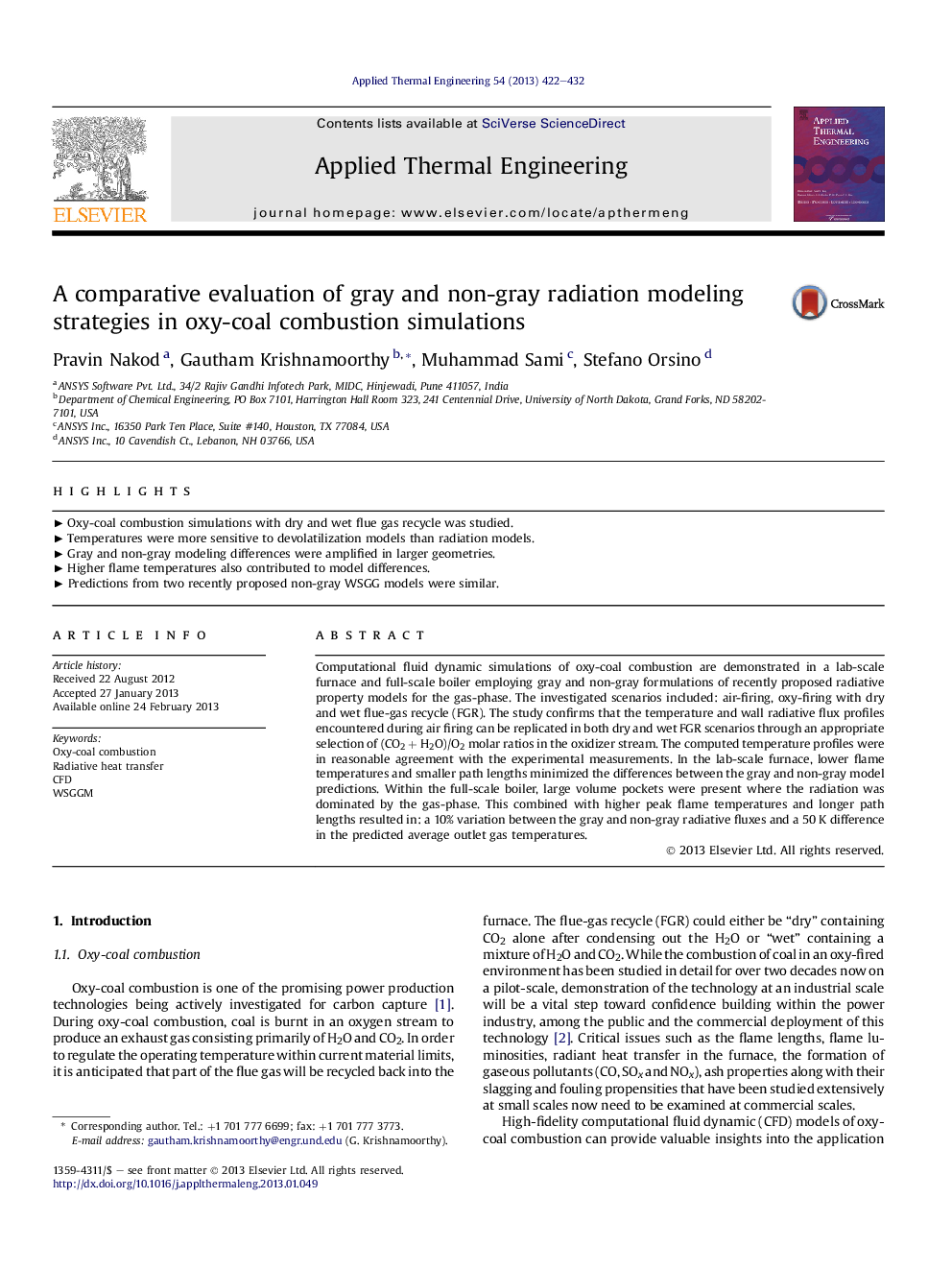| Article ID | Journal | Published Year | Pages | File Type |
|---|---|---|---|---|
| 646760 | Applied Thermal Engineering | 2013 | 11 Pages |
Computational fluid dynamic simulations of oxy-coal combustion are demonstrated in a lab-scale furnace and full-scale boiler employing gray and non-gray formulations of recently proposed radiative property models for the gas-phase. The investigated scenarios included: air-firing, oxy-firing with dry and wet flue-gas recycle (FGR). The study confirms that the temperature and wall radiative flux profiles encountered during air firing can be replicated in both dry and wet FGR scenarios through an appropriate selection of (CO2 + H2O)/O2 molar ratios in the oxidizer stream. The computed temperature profiles were in reasonable agreement with the experimental measurements. In the lab-scale furnace, lower flame temperatures and smaller path lengths minimized the differences between the gray and non-gray model predictions. Within the full-scale boiler, large volume pockets were present where the radiation was dominated by the gas-phase. This combined with higher peak flame temperatures and longer path lengths resulted in: a 10% variation between the gray and non-gray radiative fluxes and a 50 K difference in the predicted average outlet gas temperatures.
► Oxy-coal combustion simulations with dry and wet flue gas recycle was studied. ► Temperatures were more sensitive to devolatilization models than radiation models. ► Gray and non-gray modeling differences were amplified in larger geometries. ► Higher flame temperatures also contributed to model differences. ► Predictions from two recently proposed non-gray WSGG models were similar.
